Oberto famiglie di fatto.pdf - Persona e Danno
Oberto famiglie di fatto.pdf - Persona e Danno
Oberto famiglie di fatto.pdf - Persona e Danno
Create successful ePaper yourself
Turn your PDF publications into a flip-book with our unique Google optimized e-Paper software.
Specificamente, in tema <strong>di</strong> <strong>di</strong>ritto al matrimonio, i giu<strong>di</strong>ci <strong>di</strong> Strasburgo ebbero ad affermare,<br />
ormai <strong>di</strong>versi anni fa, che «the right to marry guaranteed by Article 12 refers to the tra<strong>di</strong>tional<br />
marriage between persons of opposite biological sex. This appears also from the wor<strong>di</strong>ng of the<br />
Article which makes it clear that article 12 is mainly concerned to protect marriage as the basis of<br />
the family». Con queste parole la Corte negò nel 1986 che l’art. citato fosse violato dalle<br />
<strong>di</strong>sposizioni britanniche che vietavano il matrimonio con un transessuale ( 73 ). L’anno successivo la<br />
stessa Corte stabilì che il rinvio alle leggi nazionali non consente l’equiparazione della situazione<br />
personale <strong>di</strong> convivente a quella propria del coniuge ( 74<br />
).<br />
La Corte europea dei <strong>di</strong>ritti dell’uomo ha quin<strong>di</strong>, in un primo momento, privilegiato<br />
un’interpretazione unitaria delle citate <strong>di</strong>sposizioni, nel senso cioè <strong>di</strong> tutela dell’unica forma <strong>di</strong> vita<br />
familiare quale sarebbe quella fondata sul matrimonio, in ciò sicuramente guidata dalla lettera<br />
dell’art. 12 cit., la cui rubrica recita (solo): «<strong>di</strong>ritto al matrimonio».<br />
Nel corso degli anni successivi, però, la stessa Corte ha orientato la propria lettura delle<br />
norme convenzionali in senso più ampio, in considerazione della natura della Convenzione quale<br />
<strong>di</strong>ritto vivente, che interpreta in maniera evolutiva le concezioni prevalenti negli Stati partecipanti. I<br />
giu<strong>di</strong>ci <strong>di</strong> Strasburgo hanno, dunque, ritenuto che, alla base della famiglia <strong>di</strong> cui all’art. 8, primo<br />
comma, della Convenzione, vi sia la cellula uomo-donna costituente un rapporto coniugale, ma<br />
anche un possibile altro rapporto affettivo, che, pur non essendo riconducibile al matrimonio, possa<br />
con<strong>di</strong>viderne alcuni aspetti essenziali. Conseguentemente vi è stata fatta rientrare la relazione<br />
affettiva costituita da persone <strong>di</strong> <strong>di</strong>verso sesso conviventi more uxorio per un certo periodo <strong>di</strong><br />
tempo, ove connotata da un sufficiente carattere <strong>di</strong> stabilità, desumibile, ad esempio, dalla<br />
coabitazione durevole e dalla nascita <strong>di</strong> figli, nonché dalla volontà <strong>di</strong> costituire una famiglia.<br />
Riguardo l’applicazione del principio <strong>di</strong> non <strong>di</strong>scriminazione <strong>di</strong> cui all’art. 14 della<br />
Convenzione, la Corte europea dei <strong>di</strong>ritti dell’uomo ha adottato un approccio graduale, ponendo<br />
l’enfasi, in un primo tempo, sul <strong>fatto</strong> che ciascuno Stato partecipante, al fine <strong>di</strong> evitare la<br />
<strong>di</strong>scriminazione delle coppie omosessuali rispetto a quelle eterosessuali, è tenuto alla attuazione <strong>di</strong><br />
misure ragionevolmente proporzionate allo scopo perseguito in un costante bilanciamento tra<br />
interesse pubblico e privato, trovando, cioè, il giusto equilibrio tra interessi concorrenti<br />
75<br />
dell’in<strong>di</strong>viduo e della società ( ).<br />
( 73 ) Corte europea <strong>di</strong>r. uomo, 17 ottobre 1986, Rees c. Regno Unito, in Riv. <strong>di</strong>r. internaz., 1987, p. 735 ss. V. anche<br />
Corte europea <strong>di</strong>r. uomo, 27 settembre 1990, Cossey c. Regno Unito, ricorso n. 10843/84, ove si afferma che «l’art. 12<br />
precisa che tale <strong>di</strong>ritto è soggetto alle leggi nazionali degli Stati contraenti. Le conseguenti limitazioni non debbono<br />
restringerlo o ridurlo in modo da pregiu<strong>di</strong>carne la sostanza stessa, ma non si può attribuire un effetto <strong>di</strong> tal sorta<br />
all’impe<strong>di</strong>mento posto, nel Regno Unito, al matrimonio <strong>di</strong> persone che non appartengono a sessi biologici <strong>di</strong>fferenti».<br />
( 74 ) Corte europea <strong>di</strong>r. uomo, 26 maggio 1987, F. c. Svizzera, in Foro it., 1988, IV, c. 402 ss.<br />
( 75 ) Corte europea <strong>di</strong>r. uomo, 17 luglio 2002, Goodwin c. Regno Unito, con la quale la Corte <strong>di</strong> Strasburgo ha<br />
<strong>di</strong>chiarato contrario alla Convenzione il <strong>di</strong>vieto <strong>di</strong> matrimonio del transessuale, dopo l’operazione <strong>di</strong> cambiamento <strong>di</strong><br />
sesso, con persona del suo stesso sesso originario. La Corte europea ha in tal caso affermato che il <strong>di</strong>ritto <strong>di</strong> un uomo e<br />
<strong>di</strong> una donna <strong>di</strong> fondare una famiglia non è subor<strong>di</strong>nato al <strong>di</strong>ritto <strong>di</strong> sposarsi e che l’impossibilità <strong>di</strong> procreare o <strong>di</strong><br />
essere genitori non può incidere sul primo <strong>di</strong>ritto. Cfr. anche Corte europea <strong>di</strong>r. uomo, 11 luglio 2002, I. v. The United<br />
Kingdom, in cui possono leggersi affermazioni del genere: «78. Reviewing the situation in 2002, the Court observes<br />
that Article 12 secures the fundamental right of a man and woman to marry and to found a family. The second aspect is<br />
not however a con<strong>di</strong>tion of the first and the inability of any couple to conceive or parent a child cannot be regarded as<br />
per se removing their right to enjoy the first limb of this provision. 79. The exercise of the right to marry gives rise to<br />
social, personal and legal consequences. It is subject to the national laws of the Contracting States but the limitations<br />
thereby introduced must not restrict or reduce the right in such a way or to such an extent that the very essence of the<br />
right is impaired (see the Rees judgment, p. 19, § 50; the F. v. Switzerland judgment of 18 December 1987, Series A no.<br />
128, § 32). 80. It is true that the first sentence refers in express terms to the right of a man and woman to marry. The<br />
Court is not persuaded that at the date of this case it can still be assumed that these terms must refer to a determination<br />
of gender by purely biological criteria (as held by Ormrod J. in the case of Corbett v. Corbett, paragraph 17 above).<br />
There have been major social changes in the institution of marriage since the adoption of the Convention as well as<br />
dramatic changes brought about by developments in me<strong>di</strong>cine and science in the field of transsexuality. The Court has<br />
found above, under Article 8 of the Convention, that a test of congruent biological factors can no longer be decisive in<br />
denying legal recognition to the change of gender of a post-operative transsexual. There are other important factors –<br />
the acceptance of the con<strong>di</strong>tion of gender identity <strong>di</strong>sorder by the me<strong>di</strong>cal professions and health authorities within<br />
Contracting States, the provision of treatment inclu<strong>di</strong>ng surgery to assimilate the in<strong>di</strong>vidual as closely as possible to the<br />
gender in which they perceive that they properly belong and the assumption by the transsexual of the social role of the<br />
assigned gender. The Court would also note that Article 9 of the recently adopted Charter of Fundamental Rights of the<br />
20


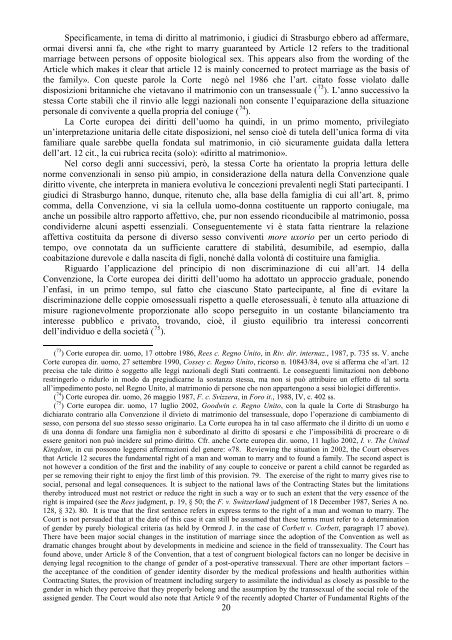
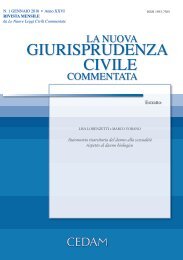
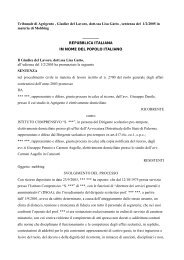
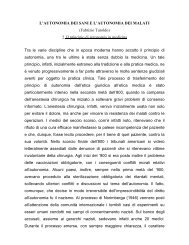
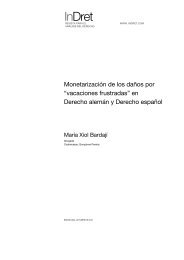
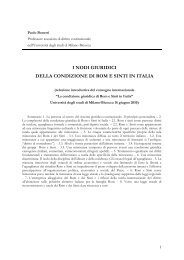
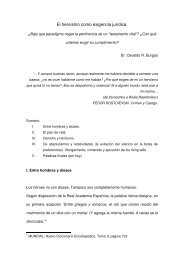
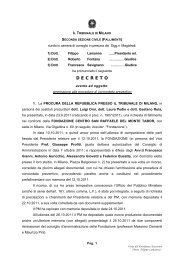

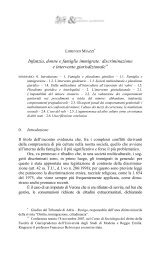
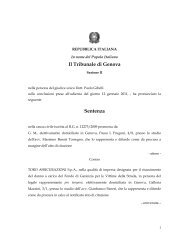
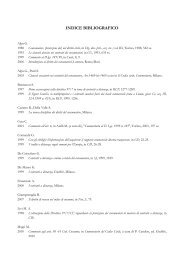
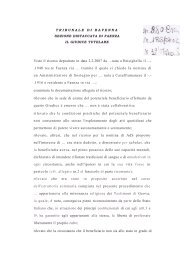
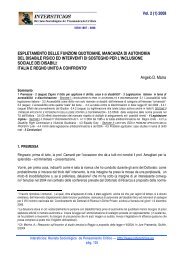
![Etica sport e doping [PDF - 117.88 kbytes]](https://img.yumpu.com/34995721/1/184x260/etica-sport-e-doping-pdf-11788-kbytes.jpg?quality=85)
